

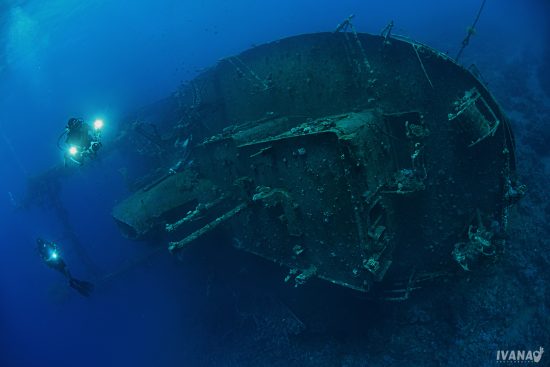
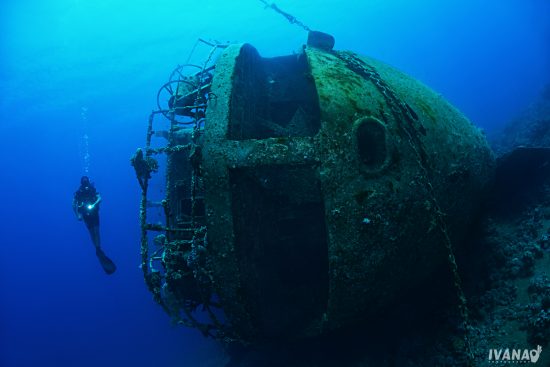
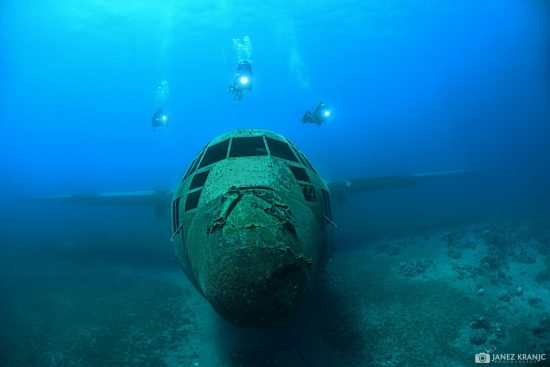
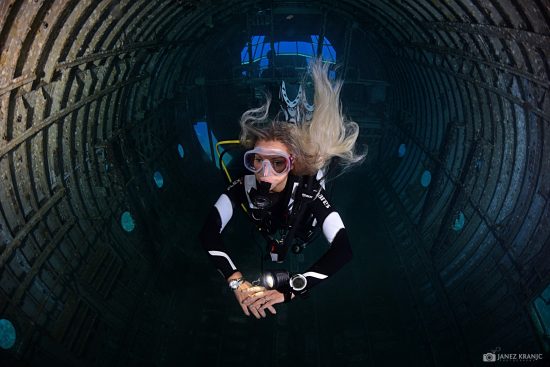

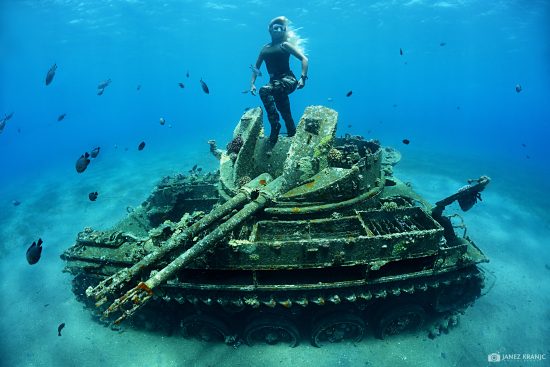
It is in the northernmost part of the Red Sea, at the very tip of the Gulf of Aqaba, that Jordan reaches out to the sea. The city that dominates this 27km long coastline is Aqaba. Once a small fishing town of only a few thousand inhabitants, today it is a tourist area offering outstanding amenities compared to other towns in Jordan. Owing to these advantages, Aqaba has seen great expansion and become a modern tourist centre.
The Jordanian part of the Red Sea is characterized by a variety of terrains. We can come across walls, reefs and various wrecks. We learned from the local seafarers that this part of the Red Sea has been spared from global warming. The corals are in very good condition and reefs are bustling with life. From a global perspective, these are the northernmost coral reefs on the planet and are in a very good state.
There are about 500 species of corals in these waters, 150 of which are hard and 350 soft. If we add 1,200 species of fish to this number, we can see how lavish this underwater world is. It is not, however, its underwater inhabitants which are the main subject of this text, but the deliberately sunken wrecks, some of which are unique in the world.
Hercules C130
This is the "most recent" sunken wreck in the Gulf of Aqaba. Following extensive preparation, this grandiose undertaking was carried out on November 16th 2017, when Hercules “landed” on the seabed.
The plane was donated to divers by the Royal Jordanian Airforce. This model of aircraft has been in use since 1950 in over 70 countries throughout the world. Today it is the no.1 dive site in Aqaba, attracting divers from around the world. It lies in a horizontal position at a depth of 12 to 17 meters. It is 30 metres long with a 40-metre wingspan and it is simply breath-taking.
It’s not only its external appearance, but the interior of the aircraft that inspires utter delight. Entering the wreck is safe and simple. A lot of windows and doors allow the light to penetrate the interior of the plane, making the experience complete. Even though it has been underwater for less than a year, marine inhabitants have already begun to settle. We are sure that it will perfectly fit into the coral reef environment in the future.
The Tank
The self-propelled anti-aircraft tank T42 Duster is perhaps one of the world's most popular diving sites. The Jordanian Royal Ecological-Diving Society is to be credited for its submersion. It was sent to the bottom of the sea in 1999 when its implementation into a coral reef began.
It is fascinating how many creatures in the marine world have found their habitat on it. Sponges, soft corals and a multitude of coral fish give the tank a distinctive air. Being located between several diving sites, the tank is the usual place for safety stops. Furthermore, it is most convenient for snorkelling and free diving. The Tank T42 Duster is a spot not to be missed.
The Cedar Pride
It is said to be one of the most beautiful wrecks in the world. The seventy-meter long cargo ship changed its name and ownership several times during its service. When it sailed into Jordanian waters as Cedar Pride under the Lebanese flag in 1982, no one could foresee that this would be her final destination. A great fire broke out on the ship and damaged it irretrievably. The wreck was left on the beach at the mercy of the sea, however, the Jordanian King personally interceded in favour of the scuttling of the Cedar Pride and her transformation into a coral reef.
It lies on its left broadside, in one piece. It is settled on two coral reefs, just 130 meters from the shore. The maximum depth is 26 meters and it is rightly considered to be one of the most beautiful Red Sea wrecks.
With these three different wrecks, we have discovered only a small part of the beauty of the Jordanian part of the Red Sea. A large number of extremely well-preserved and living reefs round off this country as a diving destination. If we add on more than a dozen sites suitable for technical diving, we can say that Jordan simply has to be visited and dived in.
Text by Janez Kranjc
Photos by Ivana O.K. & Janez Kranjc
Dive gear used: Flexa wetsuit, Bolt SLS BCD, X-Stream fins, Juno mask
 Ivana and Janez
Ivana and Janez 16th July 2018
16th July 2018 Aqaba, Giordania
Aqaba, Giordania 